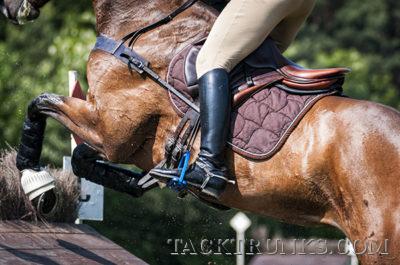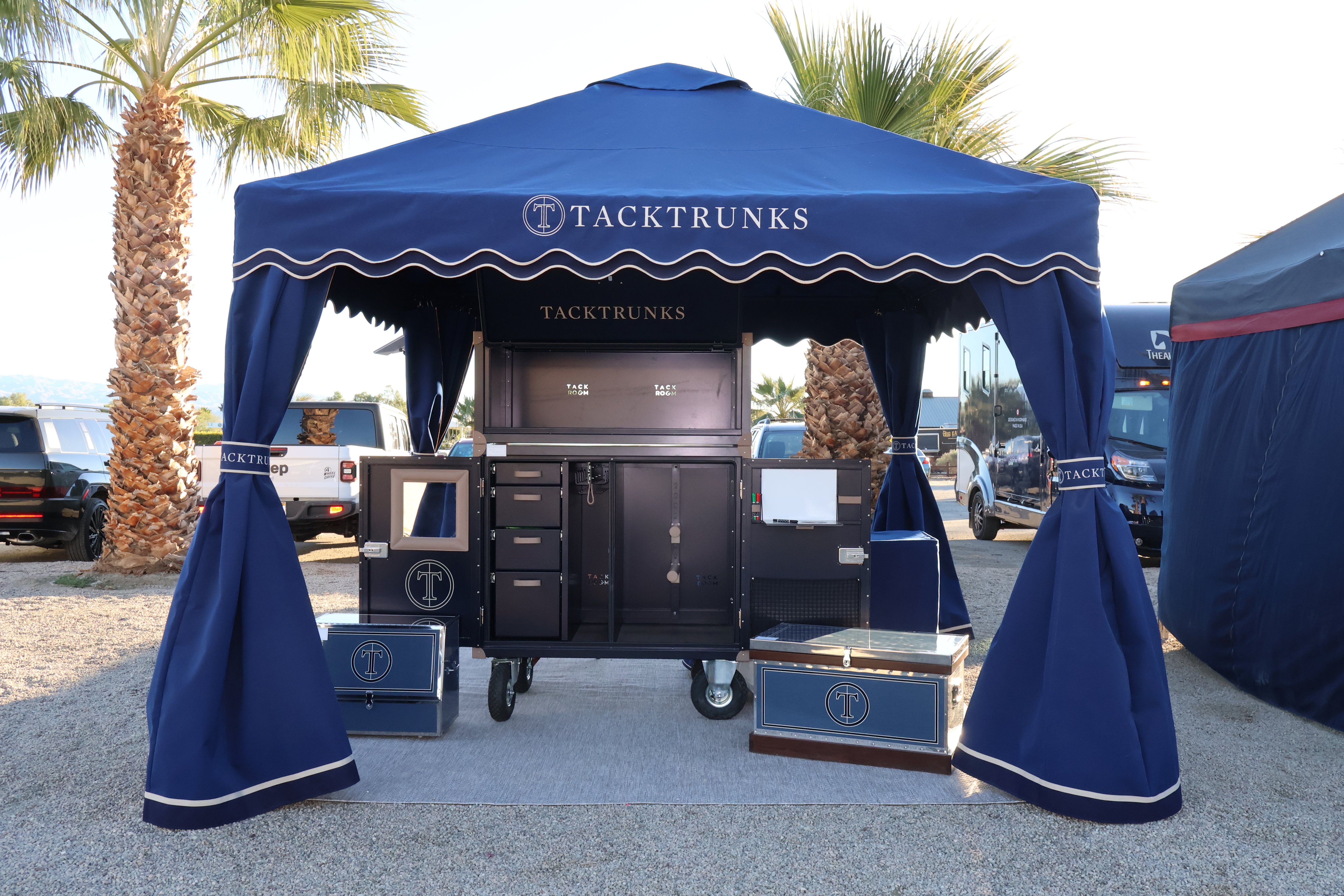Tack, Saddles & Bridle Terms Glossary
Equestrian riding has been a popular sport for thousands of years. Even the most seasoned equestrian may not know all the terms of the sport, especially when it comes to discussing equine saddles, bridles, bits and other tack supplies. Whether you are new to the equestrian world or have been riding for several years, you may come across some unfamiliar terms that you may have heard before but don’t quite understand. For a full list of tack supply terminology, you may review the terms and definitions that are listed below.
(A)
Artificial Aids: A mechanism in which the rider communicates instruction to the horse including, but not limited to, spurs and whips.
(B)
Bat: An artificial aid that is used to emphasize and back up natural aids of seat and legs and is occasionally used to punish or correct.
Bearing Rein: A rein around the neck that is used for turning.
Bight of the Reins: The part of the reins woven between thumb and fingers and out the top of the hand Billets/Billet Straps: The girth is attached to the saddle by these straps.
Bit: The mouthpiece that is made from metal, rubber or other manmade material. It is held in place by the bridle, which the rider uses to communicate instructions to the horse.
Bridle: Worn on the horse’s head, this lets the rider instruct commands through the use of the reins and bit.
Bridle Name Plates: A piece of metal or wood, generally engraved with the horse’s name, which is attached to the bridle.
Blinders: These tiny pieces of leather are secured to the bridle in order to not allow the horse from seeing behind itself but does not limit vision.
(C)
Cantle: An English saddle’s back ridge.
Cavesson: Either the noseband that is fitted to the bridle or the leather or nylon headgear, which includes attachments for side reins and a lunge line (only worn when the horse is being lunged).
Center fire: A Western saddle where cinch is hung from the center.
Cinch: Attaches on one side of the Western saddle and runs underneath the barrel, just behind the legs, to the other side.
Corona: With a large, colorful roll around the edge, this type of saddle pad is cut to fit the shape of the saddle.
Crop: An artificial aid for the rider to back up natural aids, such as the seat and legs, and is used to encourage horses to move forward or correct them.
Cross Reins: The reins overlap in the rider’s hands across the horse’s neck when using this method of holding single reins.
Cross-Ties: A method to rather a horse to a solid post or wall using two ropes or ties, one on either side.
Curb Bit: A bit fixed with cheeks and a curb chain and lies in the chin groove.
Curb Chain: The chain that is used with a curb bit.
(D)
Direct Reining: A method of controlling a horse by pulling on the reins, one hand on each rein.
Double Bridle: A traditional English bridle with two bits, snaffle and curb, which gives the rider greater control compared to a single bit.
Draw Rein: A rein that attaches to the girth at one end and passes through the bit’s rings and back to the hands of the rider, which is used to increase control, giving the horse better head position. This can be hard to use and is very easily abused.
Dropped Noseband: A noseband that buckles under the bit, preventing the animal from taking hold of the bit, in order to resist the rider’s rein aids.
(F)
Fiadore: A knot on the hackamore, which applies pressure at the rear of the jaws.
Figure-Eight Noseband: A noseband with thin leather straps that cross over at the front and buckle above and below the bit.
(G)
Girth: A method of securing the English saddle to the horse by attaching the saddle on one side, running under the barrel, behind the legs, to the other side.
Grackle Noseband: A noseband with thin leather straps that cross over at the front and buckle above and below the bit.
(H)
Hackamore: A bridle without a bit, used for breaking and training purposes.
Halter Name Plate: A piece of metal or wood, generally engraved with the horse’s name, which is attached to the halter.
Harness: As opposed to the equipment of a horse that is ridden, this refers to the equipment of a horse that is driven.
Head Stall: Leather bridle straps exclusive of bit and reins.
Hobble: Straps that are attached to a horse’s front legs in order to prevent it from drifting away.
Horn: A rider loops or twists the lariat around this prominent pommel at the front of a Western saddle when a steer has been roped, in order to secure the animal.
Honda: A ring of rawhide, metal or rope on a lasso where the loop slides.
(I)
Irons: Leather straps attach these metal pieces to the saddle, which is placed at the feet of the rider.
(J)
Jockey: Leather flaps on the side of a saddle.
(L)
Lariat: Often made of rawhide with a running noose, this rope is used to catch cattle.
Lead Strap: Used for leading, this strap or rope is attached to the halter.
Lead: A term that indicates the horse’s leading leg in canter
Lead Rope: Attached to the halter, this rope is used to lead a horse.
Longe or Lunge: Training a horse by working it in varying paces in a circle using a long longe or lunge rein. It is attached to the cavesson. Novice riders may have their first riding lessons on the lunge so they can learn basics of position without having to completely control the horse.
(M)
Mecate: A hackamore lead rope.
(N)
Neck Reining: Turning the horse by using the indirect or opposite rein against the neck.
Neck Strap: A leather strap, which is bucked around the neck of the horse in order to give novice riders security.
(P)
Pelham: A curb bit with a single mouthpiece where two reins are attached, aiming to combine the two bits of a double bridle into a signal mouthpiece.
Port: A section in the center of the mouthpiece on some curb bits, which is raised. The amount that it is raised affects the severity of the bit, with low-ported bits being milder.
Pommel: The center front of the English saddle.
Polo Chain: A flat, large linked chin chain.
(R)
Romal: Braided rawhide, which is attached to the end of connected reins.
Rowels: The toothed wheels on spurs.
(S)
Saddle Horn: A rider loops or twists the lariat around this prominent pommel at the front of a Western saddle when a steer has been roped, in order to secure the animal.
Saddle Name Plates: A piece of metal or wood, generally engraved with the horse’s name, which is attached to the saddle.
Saddle Trunks: A trunk to store saddles, bridles and other riding essentials.
Side Reins: Used in training, these reins help position the horse’s head by attaching the bit to the girth or the training surcingle.
Snaffle (bit): A design of bit that acts on the bars or the corners of the horse’s mouth, which may be jointed or straight. These do not have shanks and only require the use of one rein.
Split Reins: Reigns with ends that are not connected.
Spurs: Worn on the rider’s boots, these small metal devices help enforce the leg aids.
Stall Curtains: Hung to give you privacy during competitions, where you can easily store your gear and be blocked from the elements. Riders can also display ribbons and banners on these.
Stall Guards: Hung to contain a horse in a stall.
Stall Name Plates: A piece of metal or wood, generally engraved with the horse’s name, which is attached to the stall.
Surcingle: This webbing strap passes around the horse’s barrel and can be used to attach side reins to when lunging young horses. They can be used over the saddle, blanket or rug, as some jumpers, jockeys and eventers do, as an added precaution against the girth breaking.
(T)
Tack: A term to refer horse-riding equipment such as the saddle, bridle, etc.
Tack Box: A box to store saddles, bridles and other riding essentials.
Tack Trunks: A trunk to store saddles, bridles and other riding essentials.
Tack Up: To put the saddle and bridle on the horse.
(W)
War bridle: An emergency bridle, which is made of rope.


